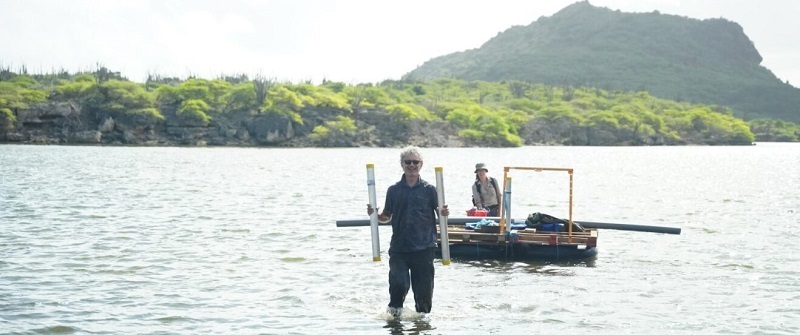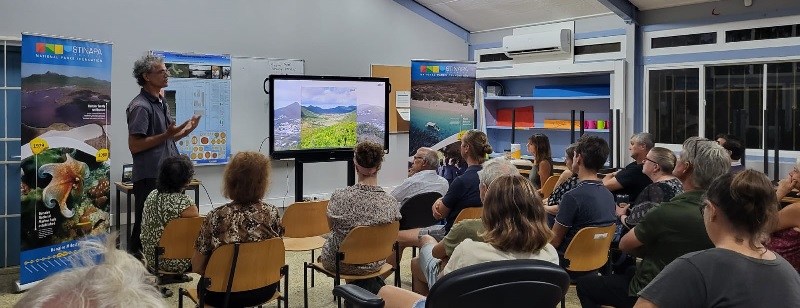
05 Jan Island(er)s at the Helm researcher Kees Nooren on fieldwork
KITLV researcher Kees Nooren is currently conducting field research in Washington Slagbaai Park in Bonaire. Kees does research on paleoecology and climatology within the Island(er)s at the Helm project.
In the past he has worked and lived in Brazil, Aruba, and Mexico. He is interested in human environmental interactions and human adaptation strategies to past climate change, especially for Mesoamerican and Caribbean societies. This research has been possible in partnership with STINAPA Bonaire, where Kees has also presented various aspects of his (preliminary) findings to the general public as well as park rangers.
About this current research Kees says: ”To address the climate challenges we are facing it is important to understand and learn from past vegetation and climate variability and past human adaptation strategies. The aim of our research project is to produce much needed paleoecological and paleoclimatic records for the insular Caribbean, and compare those with historical and archaeological records to improve our understanding of past vegetation and climate variability and past human adaptation strategies.
Important archives on the Caribbean islands that contain information about past climate and vegetation are the sediments on the bottom of coastal lagoons. These sediments, accumulated over the past thousands of years, contain microfossils that give insight into environmental conditions during the past. On Bonaire Saliña Bartol contains such an archive.
In collaboration with STINAPA Bonaire we have collected two sediment cores from this Saliña. We cored from a floating platform, and collected the sediments in aluminium tubes. We collected 2.5 m of sediments that likely accumulated over the past 2000 – 3000 years. Radiocarbon dating will be used to determine the exact age of the sediments. Microfossils like pollen and diatoms will be extracted from the sediments, and they will give use insight into climate variability, and vegetation changes in the past, also for the period before ‘recent’ human impact, when Amerindian societies inhabited the island.”
Photos by Casimir Roosje & STINAPA Bonaire.





No Comments